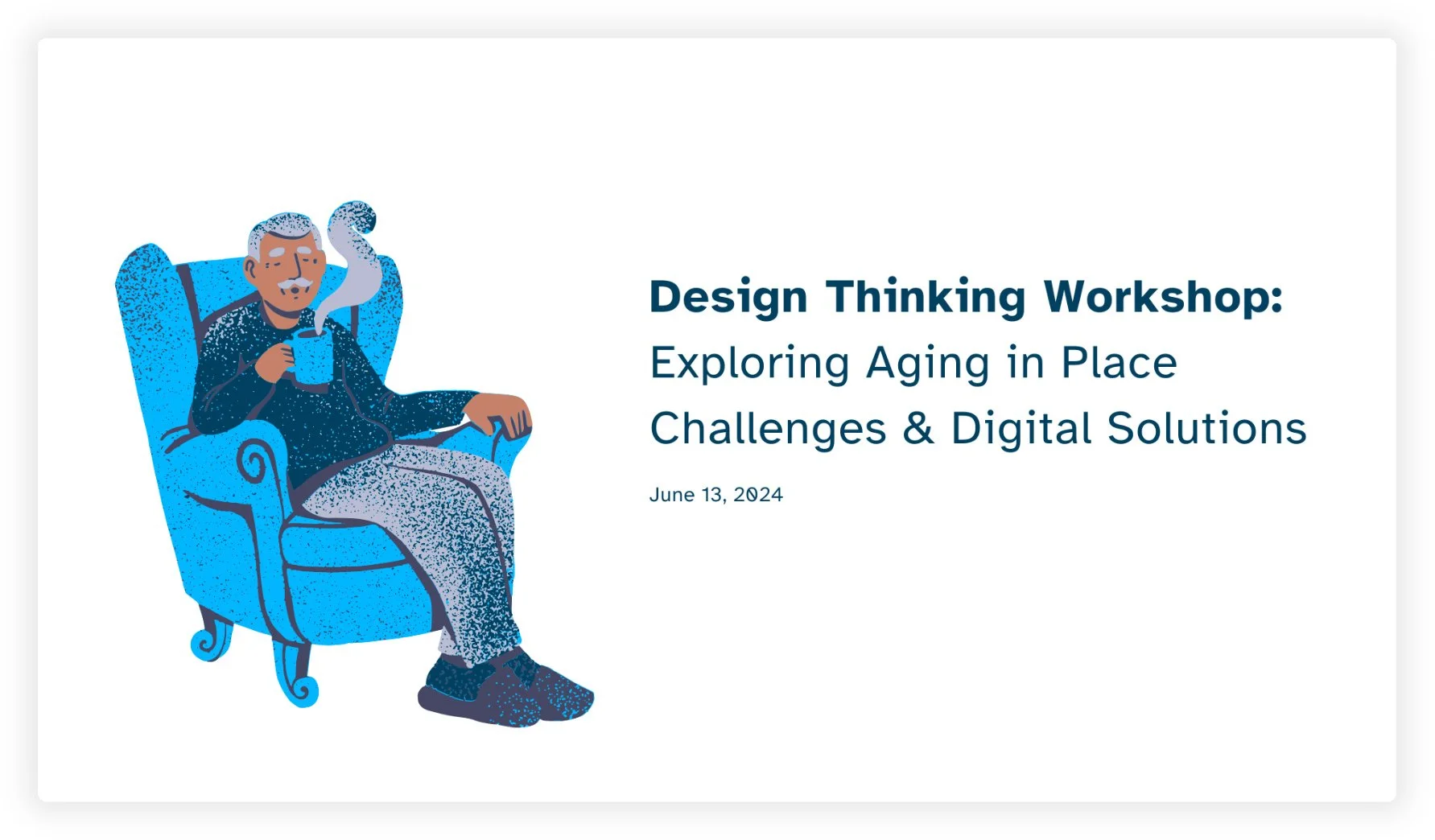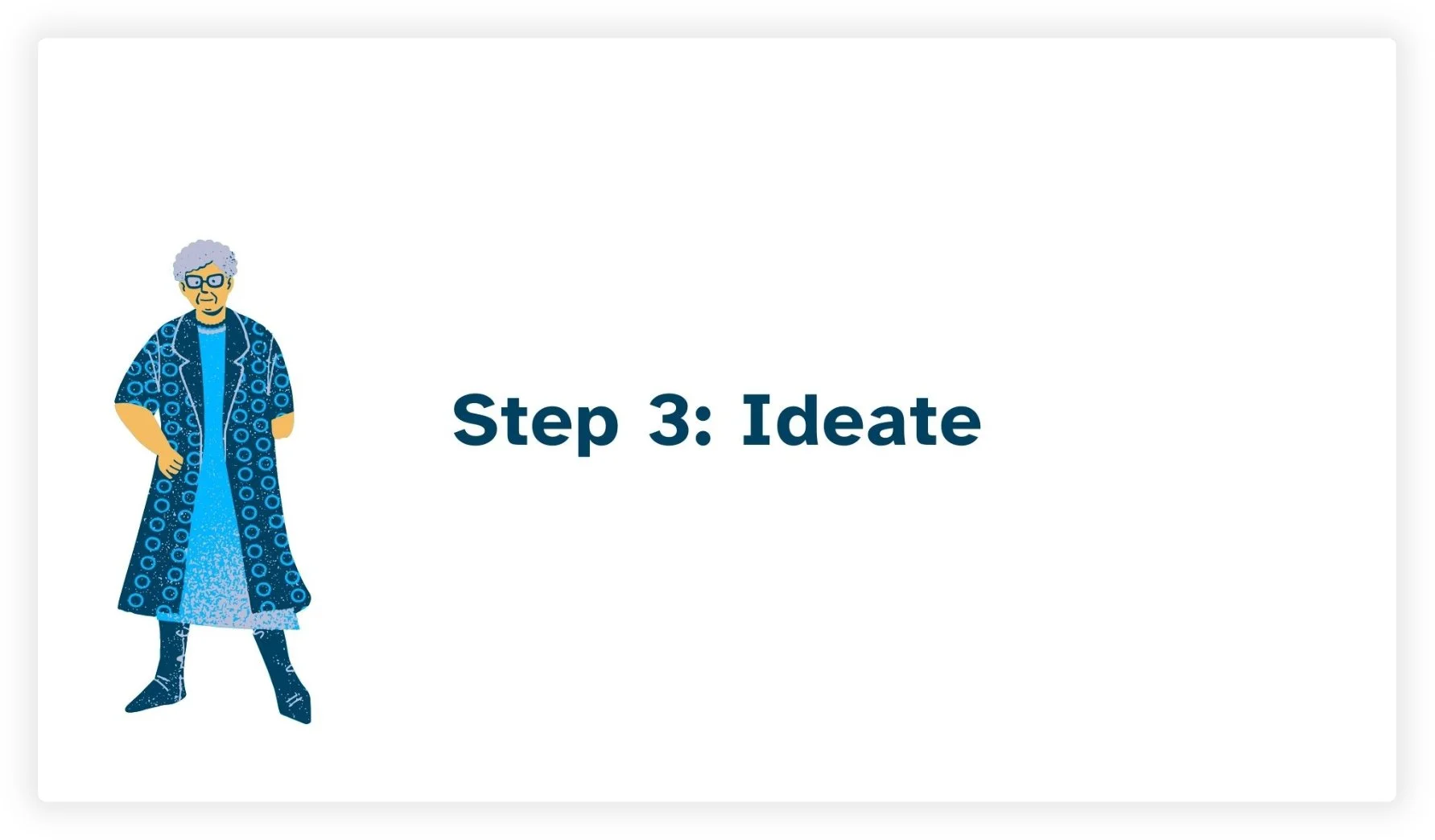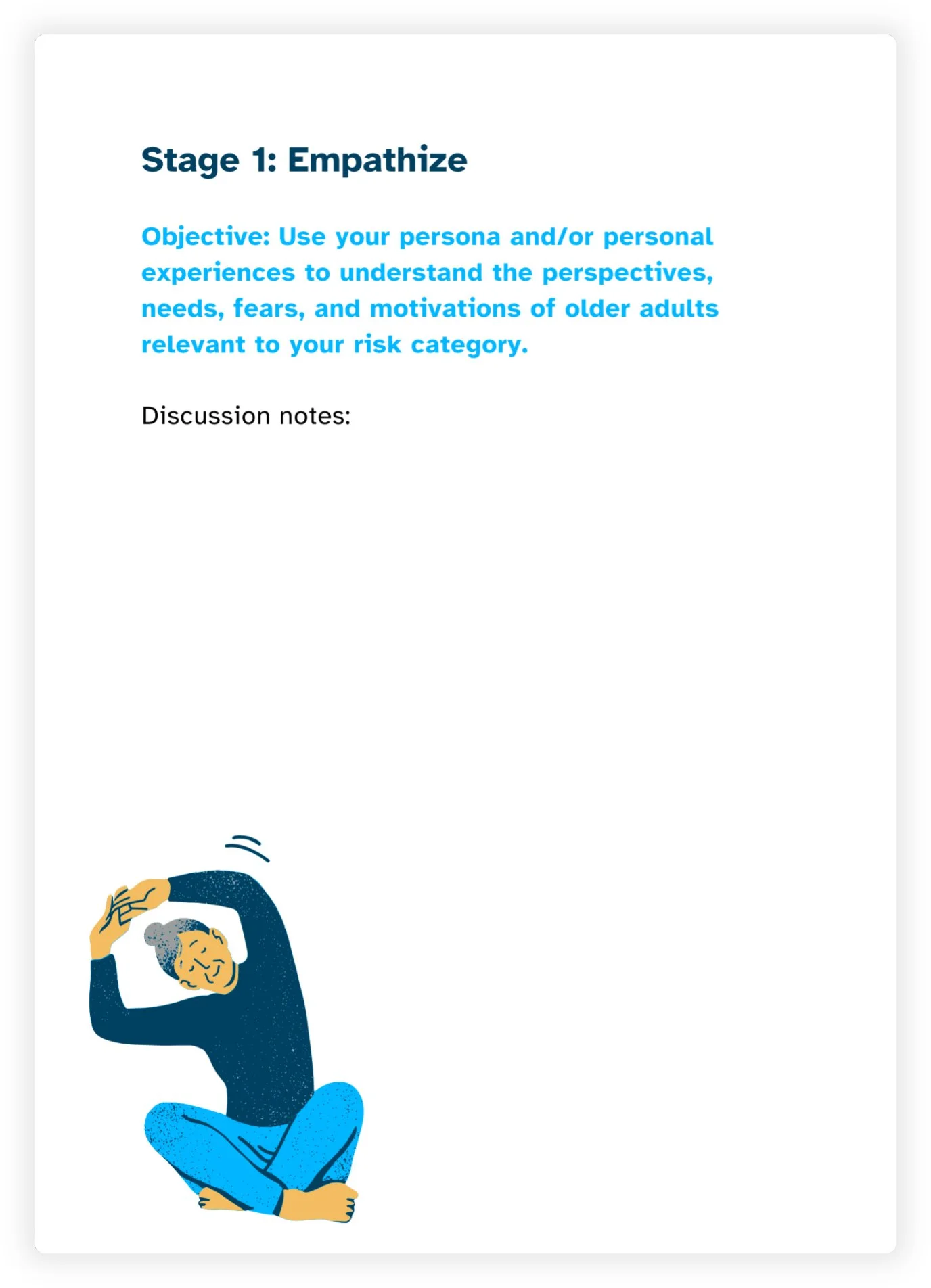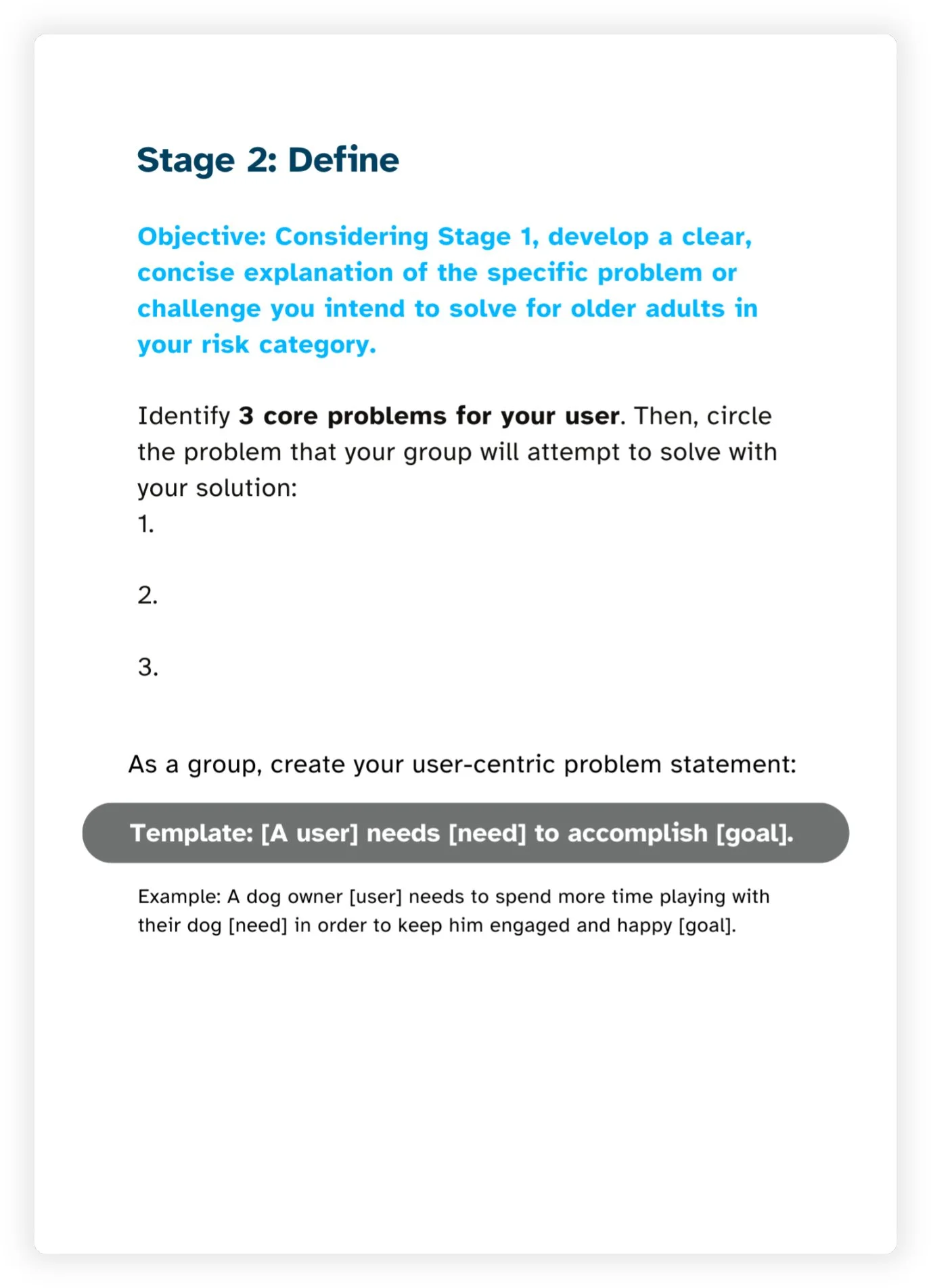Design Thinking Workshop
Aging in Place Challenges and Digital Solutions
Plug and Play Tech Center’s annual Summer Summit brings together 300+ startups from 18 industry programs to demo their technologies. They also have a few breakout sessions focusing on topics related to innovation and investing. In 2024, I planned and led one of these breakout sessions, which explored the challenges facing older adults who want to age in place and used a design thinking framework to develop ideas for digital solutions.

As our promotional materials said…
According to AARP, 77 percent of U.S. adults aged 50+ want to age in place, remaining in their homes and communities as they age. For many, this may not be possible. Financial insecurity, medical conditions, safety hazards, declining mental health, and the ability to live independently are common risks impeding their ability to do so.
In this highly interactive workshop, we will lead participants through a design thinking session focused on exploring these challenges and possible solutions. Participants from various industries will collaborate in small groups, conceptualizing digital solutions to help make aging in place accessible for more elders.
-
What is aging in place?
Aging in place is the ability to live in one’s own home and community safely, independently, and comfortably, regardless of age, income, or ability level.
-
What is design thinking?
Design thinking is an approach to problem-solving and innovation that is human-centric and anchored around user-centered design.
Presentation
The presentation slides served as an introduction to the problem and a high-level walk-through of each workshop step. Each stage was timed, and slides would be changed when it was time to move on. This system worked well to keep each group on track and ensure they would all have a finalized solution description by the end of the workshop.
Personas
Each of the five groups was assigned a persona representing an older adult user to empathize with and guide their efforts during the workshop. The five risk categories explored were finances, ability to live independently, medical conditions, mental health, and safety hazards.
Along with the persona description, groups were provided with statistics relevant to their assigned risk category to emphasize the prevalence of the issues they aim to solve.
Workbook
Workbooks were provided for note-taking during the workshop. The booklet kept everyone on track with detailed instructions on what to do, in addition to having a leader in each group from the workshop team to guide discussions.
Groups worked through each step of the design thinking process:
Stage 1: Empathize
Stage 2: Define
Stage 3: Ideate
Stage 4: Prototype
Stage 5: Test

Surprise!
One of the challenges with running a design thinking workshop is that there are no real users to test your solutions. The personas filled this need as best as they could, but I wanted to end the workshop with an engaging exercise that would emulate talking to real test users.
So, once each group had finalized their solution description, I asked them to submit it via QR code. Then, I surprised them by feeding their submissions into ChatGPT-powered imitations of their personas. We all watched the chats respond live for each group and it was a great way to close out a wonderful workshop.
















































